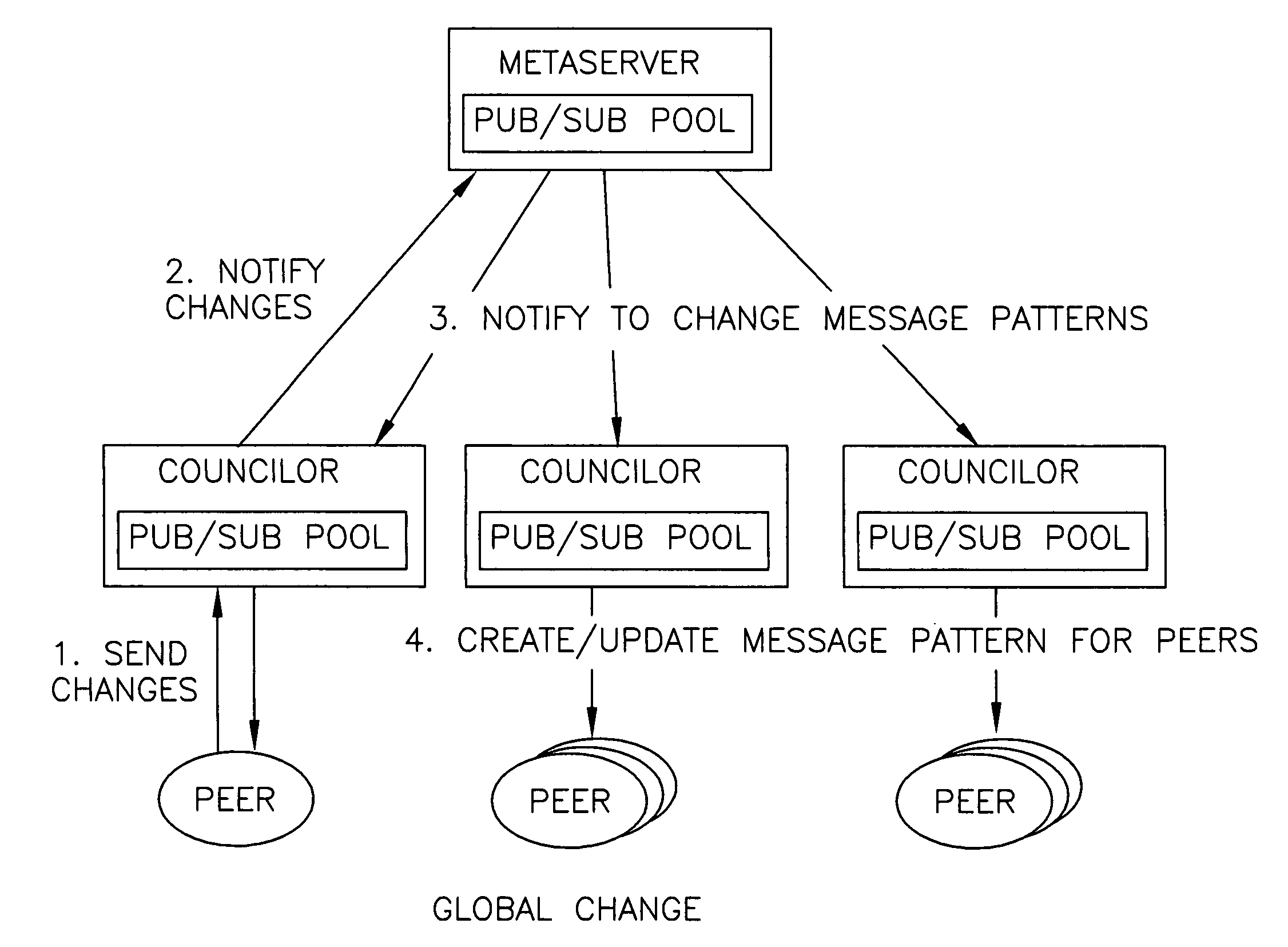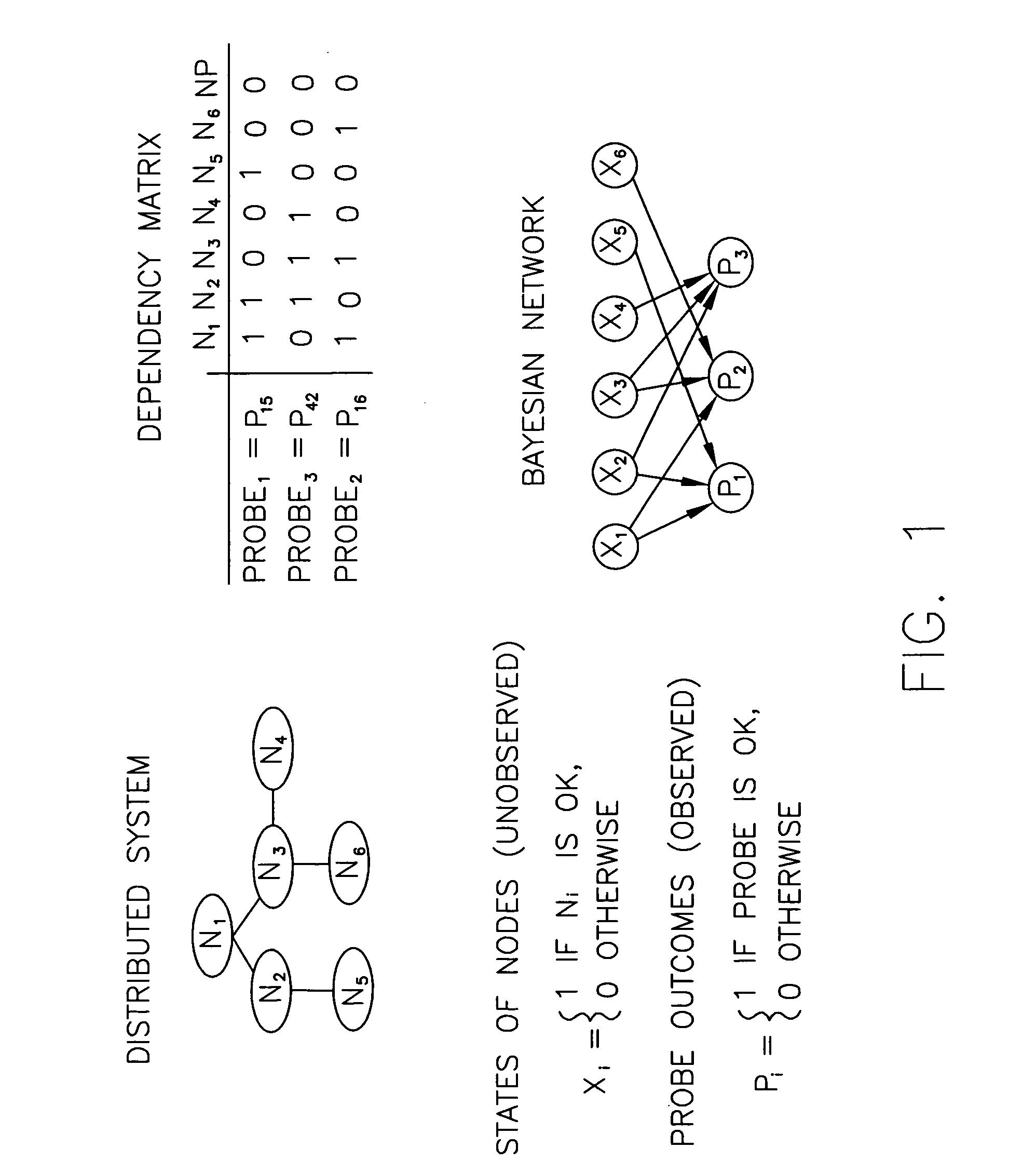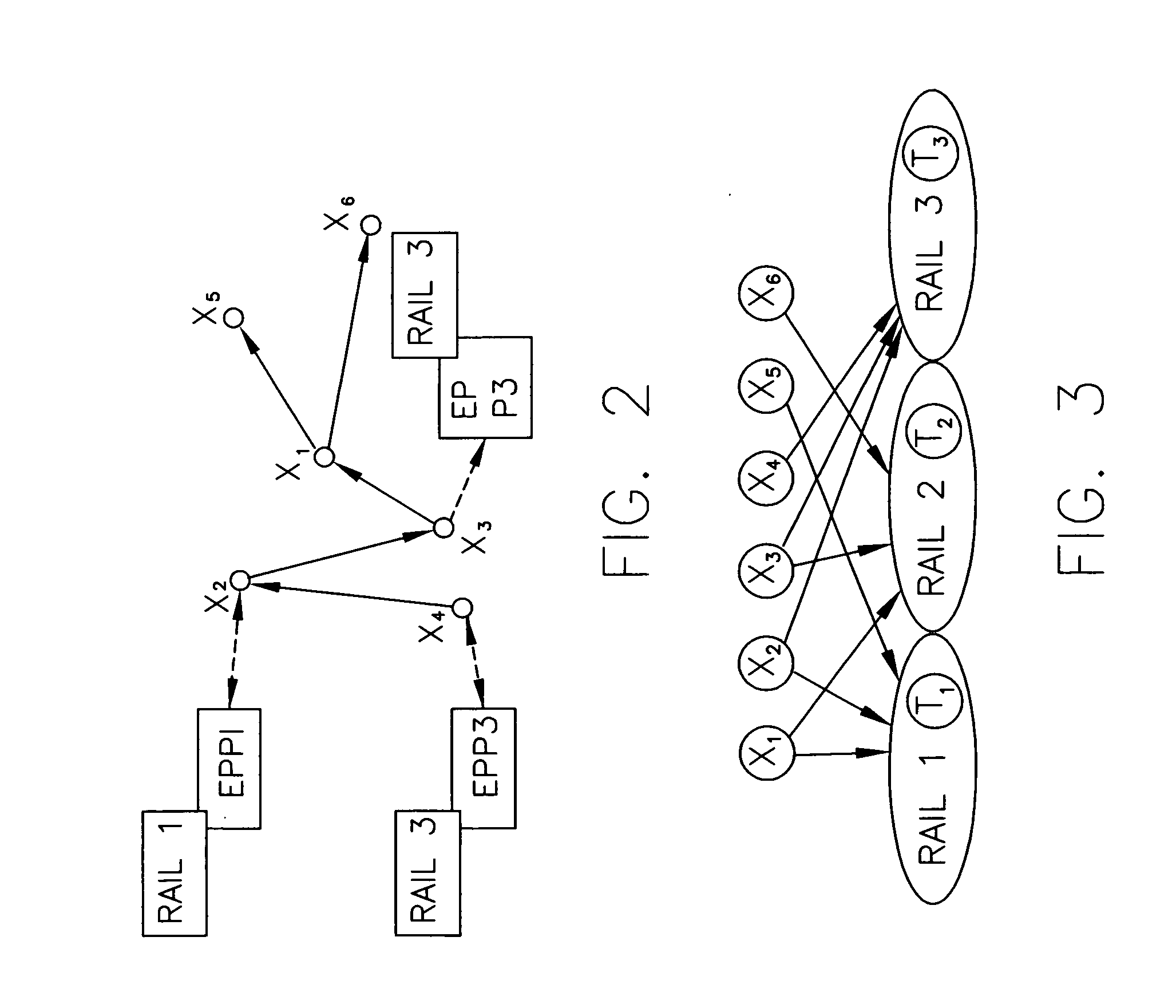Methods and arrangements for distributed diagnosis in distributed systems using belief propagation
- Summary
- Abstract
- Description
- Claims
- Application Information
AI Technical Summary
Benefits of technology
Problems solved by technology
Method used
Image
Examples
Embodiment Construction
[0013]Although a general approach is broadly contemplated herein, which can be applied to a very wide variety of prospective environments, the disclosure now turns to a specific example of example of a “probing” approach to problem diagnosis [2,3]. A “probe”, as may be broadly understood for the discussion herein, is an end-to-end transaction (e.g., ping, webpage access, database query, an e-commerce transaction, etc.) sent through the system for the purposes of monitoring and testing. Usually, probes are sent from one or more probing stations (designated machines), and ‘go through’ multiple system components, including both hardware (e.g. routers and servers) and software components (e.g. databases and various applications).
[0014]Formally, one may consider a set X={X1, . . . , Xn} of system components, a set T={T1, . . . , Tm} of tests (probes), and an m n×dependency matrix [dij] where the columns correspond to the components, the rows correspond to the probes, and dij=1 if executi...
PUM
 Login to View More
Login to View More Abstract
Description
Claims
Application Information
 Login to View More
Login to View More - R&D
- Intellectual Property
- Life Sciences
- Materials
- Tech Scout
- Unparalleled Data Quality
- Higher Quality Content
- 60% Fewer Hallucinations
Browse by: Latest US Patents, China's latest patents, Technical Efficacy Thesaurus, Application Domain, Technology Topic, Popular Technical Reports.
© 2025 PatSnap. All rights reserved.Legal|Privacy policy|Modern Slavery Act Transparency Statement|Sitemap|About US| Contact US: help@patsnap.com



